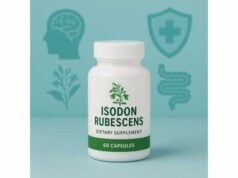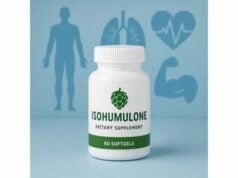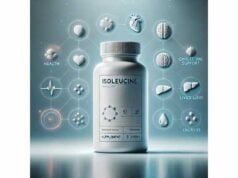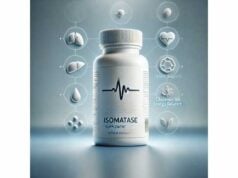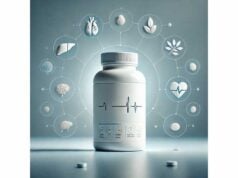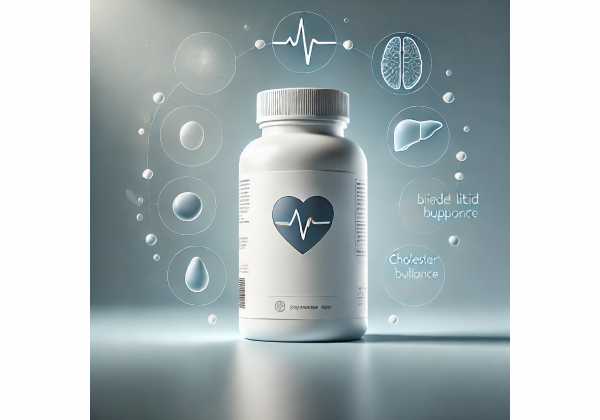
Isoimperatorin is a naturally occurring furanocoumarin best known from aromatic roots like Angelica dahurica and related Apiaceae species. In the lab, it shows anti-inflammatory, antispasmodic, and vasorelaxant actions, and it influences redox and signaling pathways that govern how tissues respond to stress. Because it belongs to the photoreactive furanocoumarin family, it also carries class-wide cautions—most notably photosensitivity with ultraviolet exposure and potential interactions with drug-metabolizing enzymes. You will find isoimperatorin inside some traditional extracts, modern standardized botanicals, and a few single-ingredient supplements. This guide explains what it is, where the evidence is strongest, practical ways people use it, why dosing is not yet standardized, how to minimize risk, and who should avoid it. You will also see clear, conservative ranges for research contexts and product labels, so you can evaluate claims and choose safely.
Key Insights
- Anti-inflammatory and vasorelaxant signals have been observed in cells and animals; human data remain limited.
- Furanocoumarins can trigger photosensitivity; avoid excess UV exposure and high-intensity sun when using these compounds.
- No established human dose; animal studies commonly use 5–40 mg/kg oral isoimperatorin, and multi-herb extracts vary by standardization.
- Avoid use in pregnancy, breastfeeding, children, and with drugs highly sensitive to CYP3A4 metabolism unless a clinician agrees.
Table of Contents
- What isoimperatorin is and how it works
- Proven and promising benefits
- Smart ways to use it in practice
- How much isoimperatorin per day?
- Safety: who should avoid it and interactions
- What the evidence says right now
What isoimperatorin is and how it works
Isoimperatorin is a linear furanocoumarin (also called a furocoumarin) with a coumarin core fused to a furan ring and an isoprenyl side chain. It occurs together with imperatorin, oxypeucedanin, bergapten, and other coumarins that give certain Apiaceae roots their characteristic scent and bioactivity. In botanical products you may see isoimperatorin listed among “coumarins,” “furanocoumarins,” “byak-angelica constituents,” or under chemical abbreviations like ISOIM.
Mechanistically, isoimperatorin participates in several themes repeatedly observed across the furanocoumarin literature:
- Modulation of inflammatory signaling. Preclinical work shows suppression of pro-inflammatory cascades such as NF-κB and MAPKs and downstream cytokines when tissues are challenged with bacterial products or allergens. These signals align with reductions in experimental edema, mucus overproduction, or inflammatory cell infiltration in animal models.
- Vascular tone and smooth muscle effects. Furanocoumarins closely related to isoimperatorin relax pre-contracted aortic rings ex vivo. Reports comparing imperatorin and isoimperatorin suggest both contribute to vasorelaxation, potentially via calcium channel effects, endothelial nitric oxide influences, or direct smooth muscle actions. For everyday readers, this means the compound has laboratory evidence of easing vessel constriction, though clinical blood pressure outcomes in humans have not been established.
- Redox and cytoprotective responses. Coumarin scaffolds can influence cellular antioxidant programs (for example, Nrf2-dependent genes) and help cells tolerate oxidative stress in models of inflammation, infection, or ischemia. Isoimperatorin’s precise placement in these networks is still being mapped, but the family resemblance is strong.
- Photoreactivity and DNA intercalation (safety-relevant). Linear furanocoumarins can intercalate into DNA; under UVA light they form photoadducts and crosslinks. This chemistry explains both traditional therapeutic use in controlled photochemotherapy and the adverse effect of sun-triggered phototoxicity if exposure is uncontrolled. The implication is practical: if your product contains isoimperatorin or related furanocoumarins, practice sun sense.
- Pharmacokinetics. Oral bioavailability has been confirmed in animals, with fairly rapid absorption and metabolism (notably to glucuronides). Inflammatory gut states can delay peak levels and blunt exposure. Like other furanocoumarins, isoimperatorin may interact with drug-metabolizing enzymes in ways that influence medication levels; the magnitude depends on dose, formulation, and co-exposures.
Isoimperatorin, then, is best thought of as a small molecule with dual identity: biologically active in stress and vascular pathways, and chemically photoreactive. This duality explains both its promise and the need for measured, context-aware use.
Proven and promising benefits
Most findings for isoimperatorin come from cell and animal research. The signals are coherent but not yet definitive for human health outcomes. Here is where the evidence is strongest today:
Anti-inflammatory activity with real mechanistic depth. In periodontitis-like models, isoimperatorin dampened inflammatory markers and tissue injury while inhibiting key switches such as ERK1/2 and NF-κB. Parallel screening work across botanical libraries repeatedly flags isoimperatorin as a contributor to anti-inflammatory action, clustering with companions like phellopterin. The consistent theme is decreased pro-inflammatory cytokines and less activation of transcription factors that drive inflammation.
Airway and mucosal protection (preclinical). In models of allergic airway inflammation, closely related furanocoumarins reduced mucus hypersecretion and Th2 cytokines while suppressing NF-κB/MAPK signaling. Isoimperatorin itself is being explored for mucosal healing and immunomodulation in gastrointestinal inflammation, including studies where regulatory T cell activity increased and macroscopic injury scores fell. These are encouraging mechanistic signals rather than prescriptions.
Vascular relaxation and smooth-muscle calming. Extracts rich in imperatorin/isoimperatorin relax isolated rat or mouse aorta pre-contracted with phenylephrine. Comparative studies attribute a meaningful portion of this vasorelaxation to these two isoprenylated furanocoumarins. While in vitro vascular relaxation does not automatically lower blood pressure in humans, it supports traditional uses for tension and spasm and helps explain user reports of “easier breathing” or “less tightness.”
Neuromodulation and analgesia hypotheses. Coumarins interact with ion channels and neurotransmission in vitro; animal work hints at analgesic properties under inflammatory conditions. Isoimperatorin’s role here is plausible but not yet mapped to specific receptor targets in humans.
Antimicrobial and antiviral screens. Isoimperatorin and its congeners show growth-inhibiting activity against select bacteria and viruses in screening assays. Translational relevance will depend on achievable concentrations in tissues and on minimizing collateral risks like photosensitivity.
Take-home for consumers. The mechanistic and organ-level findings are most compelling for inflammation control and smooth-muscle/vascular relaxation, with exploratory signals in mucosal healing. Until human trials confirm outcomes and doses, view isoimperatorin as a research-forward botanical constituent that may support comfort and resilience when used thoughtfully and in the right context.
Smart ways to use it in practice
Because isoimperatorin appears in both traditional multi-herb extracts and modern concentrates, practical use starts with knowing what, exactly, you have:
1) Understand the product type.
- Traditional extracts (e.g., Angelica dahurica root): Labels may list total extract weight without per-compound amounts. Isoimperatorin is one of several furanocoumarins present; effects reflect the whole profile.
- Standardized extracts: Some products specify total “furanocoumarins” or list imperatorin/isoimperatorin by HPLC percentage. Standardization improves predictability.
- Single-compound supplements: Rare but available from specialty suppliers. These list isoimperatorin in milligrams per capsule.
2) Match form to goal.
- For day-to-day comfort (head/neck tension, occasional spasm): Users often choose traditional extracts with a history of culinary or medicinal use, taken with meals to improve tolerability.
- For targeted experiments (e.g., training recovery, airway comfort during seasonal challenges): A standardized extract or single-compound format allows careful, low-dose trials and easier tracking.
- For research or clinician-guided protocols: Single-compound material or compounding pharmacy products allow dose-finding, bloodwork, and drug-interaction monitoring.
3) Timing and co-ingestion. Isoimperatorin is lipophilic. Taking it with food—especially a meal containing healthy fats—may aid absorption and reduce GI upset. If a product affects alertness or sensitivity to light, consider evening avoidance on high-UV days.
4) Sensible stacking without redundancy.
- Works conceptually with: magnesium (smooth muscle support), omega-3 fatty acids (inflammation tone), gentle antioxidants from diet, and breathing/relaxation techniques for tension.
- Use caution with: other photosensitizers (St. John’s wort, high-bergamot citrus oils), and supplements that strongly inhibit or induce drug-metabolizing enzymes. When in doubt, space doses and discuss with a clinician.
5) Quality checklist for buyers.
- Identity and potency: Request a certificate of analysis showing isoimperatorin (and imperatorin) content by HPLC.
- Contaminants: Ensure testing for heavy metals, pesticides, and solvents.
- Sun safety note: Clear labeling about furanocoumarin content and photosensitivity is a plus.
- Packaging: Opaque containers with desiccants support stability.
6) Expectations and tracking. Start with conservative, label-directed use for two to four weeks. Track what you care about—tension frequency, perceived airway comfort, or post-exercise soreness—alongside potential side effects (skin sensitivity, GI changes). Adjust only one variable at a time.
7) When food and lifestyle are enough. If sleep, hydration, posture/ergonomics, and whole-food anti-inflammatory patterns are already optimized, the marginal gain from adding isoimperatorin may be small. Prioritize the big rocks first; use botanicals to fill specific gaps rather than as a catch-all fix.
How much isoimperatorin per day?
There is no established human therapeutic dose for isoimperatorin. Most numbers you see online are extrapolated from animal studies, generalized from related furanocoumarins, or based on the total weight of a multi-herb extract rather than the actual milligrams of isoimperatorin itself. With that in mind, here is a conservative, transparent framework for interpreting labels and planning cautious trials:
What we know from research contexts
- Animal studies commonly administer 5–40 mg/kg oral isoimperatorin in mice, depending on the model and duration. These doses are research tools, not direct human recommendations.
- Pharmacokinetic work confirms oral absorption of isoimperatorin and related coumarins in rodents, with relatively quick time-to-peak and metabolic conjugation. Inflammatory gut states can delay absorption and blunt peaks.
Translating to real-world products
- Traditional extracts: Doses are typically given in hundreds of milligrams to a few grams of extract per day, but actual isoimperatorin content varies widely with species, plant part, harvest, and extraction method. Follow label directions and treat any “per-compound” claims cautiously unless backed by a lab report.
- Standardized extracts: If the label states, for example, “10% imperatorin/isoimperatorin by HPLC,” then a 500 mg serving provides ~50 mg combined isoprenylated furanocoumarins. Start low (one serving) and avoid multiple products with overlapping furanocoumarin content.
- Single-compound capsules: In the absence of human dose-finding trials, a research-conservative exposure is to keep daily totals at or below low double-digit milligram amounts (for example, 5–30 mg/day), taken with food, and to reassess after 2–4 weeks. This is not a medical recommendation; it is a prudence-first ceiling for healthy adults who elect to self-experiment.
Timing and cycling
- With meals to aid absorption and reduce GI effects.
- Evaluate in 2–4 weeks: if no clear benefit, stop rather than escalating.
- Consider cycling (e.g., 5 days on/2 off or periodic breaks) if using longer than 8–12 weeks, both to reassess need and to reduce cumulative photosensitization risk.
Special populations
- Older adults, low body weight, or sensitive GI: favor the bottom of any label range.
- Plant-rich diets high in citrus oils or celery/parsnip tops: you may already ingest meaningful furanocoumarins from foods; keep supplemental exposure modest and practice sun sense.
Red lines
- Do not attempt high-dose regimens or combine multiple furanocoumarin-rich products.
- Do not use in pregnancy, breastfeeding, or childhood.
- Do not self-experiment if you take medications with narrow therapeutic windows affected by CYP3A4 or related pathways, unless your prescriber agrees.
The fit-for-purpose bottom line: follow label directions on reputable products, keep total furanocoumarin exposure modest, and prioritize clear, functional endpoints rather than chasing milligram targets.
Safety: who should avoid it and interactions
Isoimperatorin inherits class-wide cautions from linear furanocoumarins and adds a few that are specific to modern supplement use. Respect these guidelines to reduce risk:
Photosensitivity and skin
- Linear furanocoumarins can cause phototoxic reactions when UVA light hits skin containing the compound. Reactions range from redness and burning to blistering and delayed hyperpigmentation.
- Practical steps: limit sun exposure, wear protective clothing, avoid tanning beds, and apply broad-spectrum sunscreen when using furanocoumarin-containing products—especially during high-UV months and if you also use citrus essential oils on skin.
Drug metabolism and grapefruit-like effects
- Several furanocoumarins inhibit CYP3A4 and can raise levels of susceptible drugs. While isoimperatorin’s exact inhibitory potency in humans is not fully defined, the class signal warrants caution.
- Medications of concern: certain statins, calcium-channel blockers, some antiarrhythmics, immunosuppressants (e.g., tacrolimus, cyclosporine), benzodiazepines, and others with tight therapeutic ranges.
- Action plan: if you take such drugs, do not add furanocoumarin-rich supplements without your clinician’s approval. If a prescriber agrees, monitor for side effects and consider drug-level checks where standard of care.
Who should not use isoimperatorin supplements
- Pregnant or breastfeeding individuals (lack of safety data; theoretical developmental risks).
- Children and adolescents (unnecessary exposure; better alternatives exist).
- People with photosensitivity disorders or taking photosensitizing medications (e.g., some antibiotics, retinoids, thiazides).
- Patients on narrow-therapeutic-index medications metabolized by CYP3A4 or related pathways unless the prescriber agrees and can monitor.
- Individuals with a history of severe reactions to celery, parsley, or citrus peel oils (overlap in furanocoumarin chemistry).
Other considerations
- Liver and kidney health: use only under medical guidance if you have significant hepatic or renal disease.
- Topicals: essential oils and perfumes rich in bergapten or similar compounds can add to total furanocoumarin burden. Avoid layering multiple sources.
Stop and seek care if you notice
- Severe sunburn-like reactions after normal sun exposure, blistering, persistent dark patches, unusual bruising or bleeding, marked dizziness, palpitations, or signs of drug toxicity (excess sedation, muscle pain on statins, etc.).
Safety summary: with measured dosing, label adherence, and sun and medication awareness, many healthy adults tolerate furanocoumarin-containing botanicals without issue. But because isoimperatorin can interact with light and liver enzymes, an abundance of caution is appropriate—especially if you use prescription drugs.
What the evidence says right now
A practical synthesis of the current research landscape looks like this:
Evidence strengths
- Inflammation: Repeated demonstrations of NF-κB/MAPK pathway suppression and downstream cytokine reduction in cells and animal tissues challenged by bacterial components or allergens. In periodontal and gut models, isoimperatorin lowered inflammatory scores and improved histology.
- Vascular tone: Comparative and extract studies show relaxation of pre-contracted aorta and hint that isoprenylated furanocoumarins—imperatorin together with isoimperatorin—are major contributors. The mechanisms likely include both endothelial and smooth-muscle factors.
- Pharmacokinetics: Oral bioavailability is confirmed in rodents; disease states alter absorption kinetics. This supports the view that standardized, food-co-ingested dosing matters, and that gut health can influence exposure.
Evidence gaps
- Human trials: There are few to no well-powered randomized trials of purified isoimperatorin on clinical outcomes such as pain, blood pressure, lung function, or quality of life.
- Dose-response in humans: We lack exposure–response curves, tolerability thresholds, and interaction quantification for the single compound.
- Long-term safety: Phototoxicity and drug-interaction potential are known class risks; real-world incidence rates at supplement-level doses are not defined.
What this means for decision-making
- If you are curious and otherwise healthy, the most reasonable path is to favor standardized traditional extracts with transparent testing, use low, label-directed exposure, and reassess in 2–4 weeks.
- If you take medications metabolized by CYP3A4, or you are in any high-risk category, prioritize non-furanocoumarin alternatives with similar goals (for example, magnesium for muscle comfort, saline and breathing training for airways, or other botanicals that do not carry photosensitivity).
- For researchers and clinicians, the agenda is clear: conduct human dose-finding and interaction studies, quantify phototoxic thresholds under real UV exposures, and map PK in health and disease.
Bottom line
Isoimperatorin is a mechanistically interesting molecule with supportive preclinical data in inflammation control and vascular relaxation, counterbalanced by well-characterized class cautions. It can be used thoughtfully within a broader plan—but it is not yet a frontline, evidence-based therapy for specific human conditions. Let real-world goals and risk tolerance guide whether it belongs in your routine.
References
- Isoimperatorin alleviates lipopolysaccharide-induced periodontitis by inhibiting ERK1/2 and NF-κB pathways (2023)
- Review of Natural Resources With Vasodilation: Traditional Medicine to Modern Drug Discovery (2021) (Systematic Review)
- Application to Pharmacokinetic Study of Angelica dahurica Radix: Quantitative Analysis and Oral Bioavailability of Oxypeucedanin, Imperatorin, and Isoimperatorin in Rats by UPLC-MS/MS (2017)
- Dietary Intake of Coumarins and Furocoumarins through Citrus Beverages: A Detailed Estimation by an HPLC-MS/MS Method Combined with the Linear Retention Index System (2021)
- Bergaptol, a Major Furocoumarin in Citrus: Pharmacological Properties and Toxicity (2024) (Review)
Medical Disclaimer
This article is for general education and is not medical advice. Isoimperatorin and other furanocoumarins can interact with medications and increase sensitivity to sunlight. Do not start, stop, or change any supplement without speaking with a qualified healthcare professional, especially if you are pregnant or breastfeeding, have liver or kidney disease, take prescription medications, or have a history of photosensitivity. If you choose to try a product containing isoimperatorin, use the lowest practical dose, follow label directions, and stop if you experience concerning symptoms.
If you found this guide useful, please consider sharing it on Facebook, X, or your preferred platform, and follow us for future evidence-based articles. Your support helps us continue producing careful, people-first content.

